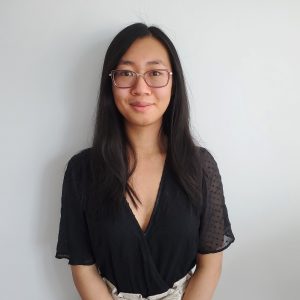Cathy is a 5th year Science student at UBC doing an honors in Microbiology and Immunology. She is greatly interested in synthetic biology and genetic engineering, and has been involved in many research opportunities regarding these topics.

Why she chose her current major
UBC has no formal genetics program for undergraduate students. Doing a Microbiology and Immunology honors allowed her to pursue topics in genetic engineering and synthetic biology. The program also gave her flexibility in pursuing other life science topics and explore other potential interests. She chose to do an honors, because of the opportunity to do a thesis. In this regard, she could gain research experience, be responsible for her own project, and decide whether she should pursue graduate studies.
Her advice to incoming first years
When Cathy first started university, she was actually in a business program. She found out that she wasn’t really interested in business, however didn’t want to deal with the hassle of switching to another program. In the end, she switched and she hasn’t regretted this decision at all. Cathy’s advice to first years is to not be afraid of changing your program if you’re unsatisfied. Don’t stay in a program you don’t like, the sooner you switch the better.
Research and projects
Cathy is very involved with research. One of her favorite experiences was being part of UBC BIOMOD, a student design team.
In 2018, their team looked at ways to minimize the toxic side-effects of doxorubicin, a chemotherapy drug used to treat Acute Myeloid Leukemia (a type of cancer). These side-effects occur due to doxorubicin targeting healthy cells (hair follicles, intestinal cells, etc.) along with cancer cells. To this end, they created a tetrahedron delivery molecule, which could specifically recognize tumor cells. Upon tumor cell recognition, they delivery molecule would enter the cell and release doxorubicin, allowing for targeted delivery of the drug.
In 2019, they further developed a delivery system called a nanoclew. Which, in addition to doxorubicin, carried zinc phthalocyanine. Zinc phthalocyanine can be activated via light, generating reactive oxygen species that destroy the cancer cell. Using both doxorubicin and phthalocyanine simultaneously in the cancer cell allows for combinatorial therapy.
Cathy has also undergone two Co-op experiences. The first where she investigated knockout genes in Caenorhabditis elegans by using CRISPR. The second where she was involved in screening drugs against bladder cancer, specifically those targeting a specific receptor, notch 2.
Plans for the future
Cathy is looking to continue her studies in graduate school. She is looking to pursue a masters in a genetics or computational biology field, with the end goal of doing a PhD.
How she’s keeping entertained during quarantine
Cathy has been binge watching machine learning videos to learn Python and R. This has inspired her to consider computational biology in the future.
Bonuses
-A fun fact about Cathy is that she loves making 2D animations in her spare time.
– Her favorite place on campus is the life science institute, because of the nice views and the quiet study spots.
